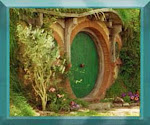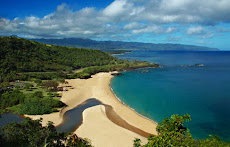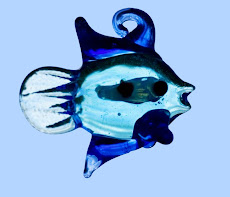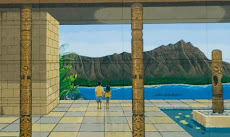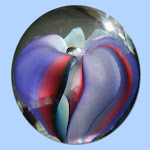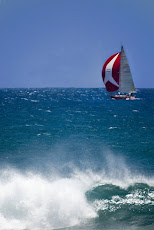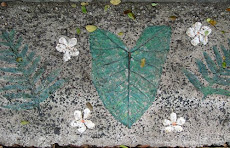|
|
| |
| (Many Paths) | ||
| An Online Newsletter Celebrating Native America | ||
| July 28, 2001 - Issue 41 | ||
|
| ||
| Skydancer.tv Reaches for the Stars | ||
| by Suzanne Westerly, Photographer / Writer | ||
| The photo of Dan was taken in front of the restaurant in Santa Monica after our interview |
| Santa Monica, California Over a plate of nachos in a Santa Monica restaurant, Dan talked enthusiastically about Skydancer.tv, "We will be making programming content for various networks, and cable company's, could be anywhere on the globe, actually." On June 17th a partnership between the Oneida Nation in New York, and longtime American Indian Los Angeles-based producers Dan C. Jones (Ponca Tribe of Indians of Oklahoma) and Sonny Skyhawk (Sicangu Lakota Tribe of South Dakota) to create a television production company was announced. The project is believed to be the first television production company owned, operated and funded entirely by Native Americans. Dan and Sonny now in the middle of their first Skydancer.tv project, the World Championships of American Indian Dance, will attend to all the fine points as Dances continue to grow over the next few years. They have been working on the details with NBC Enterprises and Syndication for over a year. "We've been negotiating with NBC, and they have made a tentative agreement to assist us in developing the marketing plans. . and to try to find a way to bring this beautiful culture to ... television so that we can actually have heroes on TV for our children, role models, so to speak. That's really why we're doing this," said Dan. As a Southern Straight Dancer himself, Dan knows the American Indian dance world very well. "The dance itself is a powerful part of American Indian culture," he explained. "Dance is really the heartbeat of American Indian culture." The dances have always had a strong influence on the way American Indians have historically dealt with their relationship with the US government, which has been a rocky one," he said. "The dance at times has been feared by the [U.S.] government to the point of them outlawing the dance around the turn of the last century. A lot of the older dances now that we see; Crow Fair or Rosebud South Dakota or Ponca, OK, my dance, are celebrating their 125th, 135th 130th years." Those numbers actually signify the number of years since the dances were again "allowed" by the U.S. government. "These dances are of course ceremonials that have gone on since we've been here, forever, you know. Certain dances have been so powerful that they have caused massacres. The massacre at Wounded Knee was based on a group of people going to a dance and the dance was the Ghost Dance," said Dan. "American Indian dance is the heartbeat of Native American culture throughout America, and it's really where a lot of our superstars have come from," he said. "The people that have excelled in the dance arena, are the people we have always looked up to. They've been our heroes." Skydancer.tv's Premier
Dan explained that there were two style of drums, the Northern and the Southern Drum, both incorporate many tribes from their respective regions." Dan and Sonny decided the best people to judge the dancers were "people who have retired from the arena. When [the dancers] have won in one arena for three years, they are generally given the trophy and they retire as undisputed champions." Regarding Nations that do not do Pow Wow dancing like the Pueblos of New Mexico, Dan said, "I think if we are welcome there, that we would definitely highlight certain social dances that they wouldn't mind sharing with the rest of the world." Skydancer.tv will begin with four categories of dance. The audience will get a chance to see and understand the Women's Fancy Shawl Dance, the Men's Fancy Dance, the Women's Traditional, and the Men's Traditional. The work done on the Traditional Dance outfits is incredibly beautiful and elaborate. (close-up photos of bead work) "They are high energy and they are also very stately, we want to introduce these dances slowly," said Dan. There are many other dances, many age groups, and each will be highlighted in different programs. The perseverance and determination of the little ones impress many onlookers. "We all start from toddlers, it's a very serious business," Dan said softly. The Hollywood Scene
Sonny was quoted in a recent press release saying, "Not since James Young Deer, a Winnebago in the silent era, have we as American Indians been poised to take control of our image. We intend to truly define the dynamic experience and life of our people in the most powerful mediums of film and television." Dan, or Sasuweh, his Indian name, began his career as "an artist working on single frames of a picture when it dawned on me the meaning of moving pictures, so I got into film about 20 years ago." Most of Dan's films have been documentaries. Dan has studied Indian storytelling all his life, but over the last five years, he has been studying Western narrative structure. "Basically, what is drama? I discovered that the Western mind has a certain way they are used to hearing stories - a beginning, middle, and an end. I became very intrigued at the difference in the Western mind compared to what I knew from my world. I am now studying the Western narrative structure in-depth. The writings of Aristotle, the poetics and just how you create drama and what drama actually is." Dan is also a member of the Native American Media Task Force in Los Angeles, California. An important part of Skydancer.tv will be a large web presence. This will enable people throughout the world to access their productions. The first broadcast is targeted for the late 2002, early 2003. New Horizon's for the Oneida Nation Skydancer.tv is one of the latest progressive endeavors of the Oneida Nation. Representative and CEO Ray Halbritter was quoted in a recent press release saying, "With a major talent search underway, the next logical step is to establish a presence in Hollywood. Skydancer.tv, Sonny, and Dan fit right into the Nation's goals of creating opportunities for Native talent in the entertainment industry. Their experience will be invaluable to our expanding efforts to bring more Native voices to film, television, theater and new media." Halbritter also expressed his pleasure with NBC in its dedication for helping bring the voice of Native people to television and other entertainment venues. For Skydancer.tv, this is only beginning. Expanding into commercials, music videos, and event production are all being discussed by the Nation. "As Native people of the United States, our mythologies, our stories are America's stories. They speak of and belong to this land. We all are tied to this land and discovering its rich stories will unite us as a country. People are going to get a lot out of what we are doing and it's great to have a partner in the Oneida Nation that understand this," said Dan. Go to the Oneida Nation's Internet site www.oneidanews.net for more information.
|
|
| ||




